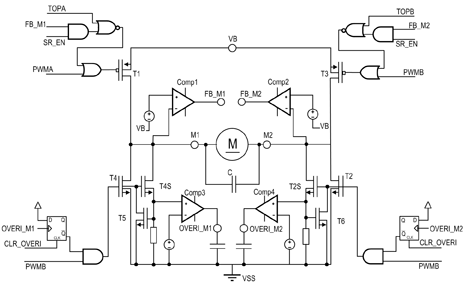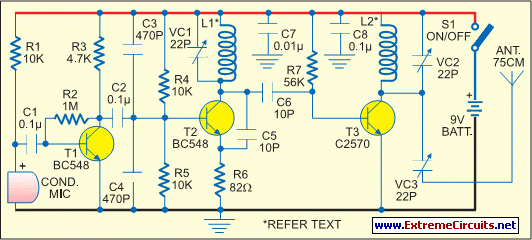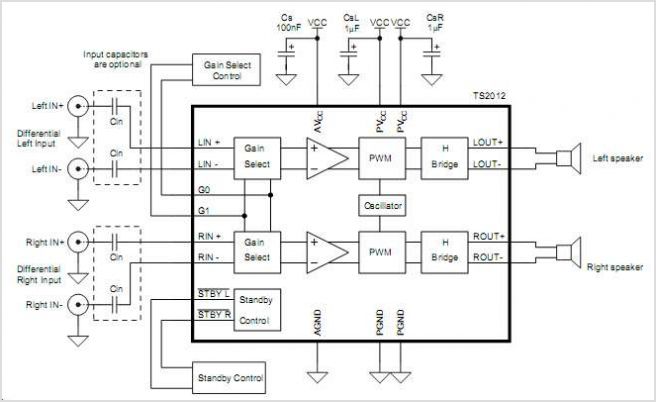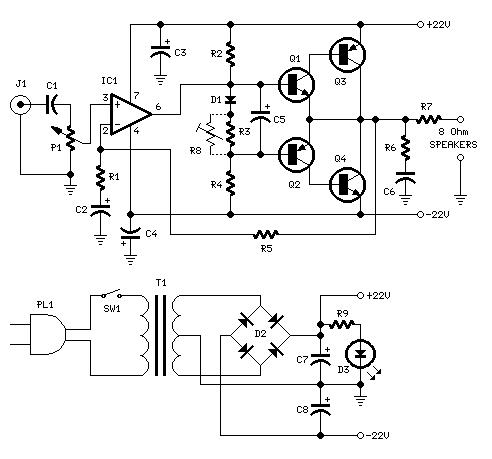
H Bridges provide smart power for automotive SoCs

The wide variety of automotive motor drivers, including those used for HVAC (heating, ventilation, and air conditioning), headlamp, seat positioning, window, and mirror applications, necessitates circuits that perform more than just switching the motor on and off. The drivers must control direction, torque, speed, acceleration, and deceleration, as well as sense position and detect stall conditions. Additionally, they must endure harsh environmental conditions, such as electrostatic discharge (ESD), over- and reverse-voltages, wide temperature ranges, and electromagnetic interference (EMI). Furthermore, since some applications are safety-critical, they must also meet high quality and reliability standards. Integrating drive-control functions onto a single chip (system-on-chip, or SoC) poses significant challenges, as these chips must operate at high temperatures, high voltages (up to 80V), and handle multi-amp currents. This article discusses the design implementation of H-Bridges in "smart power" technologies for three automotive applications: a stepper motor actuator for headlamp positioning, a ventilator motor controller for regulating airflow and temperature, and a Class D power amplifier for audio amplification. Most automotive applications require the coexistence of analog and digital functionalities. Thus, the advantages of integrating these functionalities into a single chip to create an integrated circuit (IC) are substantial. However, this mixed-signal integration also introduces considerable challenges, including the need to withstand the previously mentioned severe environmental conditions. Essentially, as depicted in the schematic, the chip integrates system functionality from a sensor (on the left) to an actuator (on the right) through digital processing. Conventional mixed-signal technology allows for the combination of analog control and signal processing functions, such as amplifiers, analog-to-digital converters (ADCs), and filters, with digital functionalities including microcontrollers, memory, timers, and logic control functions on a single chip. All signals processed for algorithmic or arithmetic calculations are digital, necessitating the conversion of analog to digital signals when submitting data for comparison or processing by the microcontroller. Additionally, conversion from digital output signals to high-voltage analog signals is required to drive an actuator or load. The latest mixed-signal technology developed by AMIS simplifies the implementation of such driver functionalities by permitting much higher voltage capabilities (up to 80V) to be integrated into an integrated circuit alongside the lower voltages required for conventional mixed-signal functions. This high-voltage mixed-signal technology is especially pertinent to automotive electronics applications, where higher voltage outputs—needed to drive motors in ventilation systems, adjust headlamps, or rapidly switch transistors in Class D amplifiers for audio—must be combined with analog signal conditioning functions and complex digital processing. Recent advancements in mixed-signal semiconductor processes are addressing some of these challenges. This article specifically focuses on the driver design aspect and emphasizes the considerations designers must keep in mind when specifying integrated mixed-signal ICs. The market for intelligent automotive motor-driver circuits and fast-switching Class D audio drivers is advancing towards integration after years of discrete implementations. These applications extend beyond merely switching loads on and off and must operate reliably under extreme environmental conditions. Achieving this blend of requirements necessitates the combination of robust state-of-the-art technologies with effective circuit design and application expertise.
The design of automotive motor drivers requires a comprehensive understanding of both analog and digital circuit principles, as well as the environmental challenges faced in automotive applications. The H-Bridge configuration is particularly significant due to its ability to control the direction of motor rotation. In the context of HVAC systems, for instance, precise control over the fan motor's speed is crucial for maintaining desired cabin conditions. The integration of sensors within the circuit allows for real-time feedback on motor performance, facilitating adjustments to prevent stalling or excessive load conditions.
The challenges of high voltage operation necessitate the use of specialized components capable of withstanding the demands of automotive environments. This includes the implementation of robust ESD protection mechanisms and careful selection of materials that can endure temperature fluctuations. The mixed-signal integration allows for the combination of high-voltage driving capabilities with low-voltage digital processing, enabling sophisticated control algorithms to be implemented directly on the chip.
Moreover, the integration of digital signal processing (DSP) functionalities can enhance the performance of audio amplifiers, providing features such as dynamic range control and equalization directly within the driver circuit. The careful design of power stages within these drivers must account for thermal management, ensuring that heat dissipation is effectively managed to maintain operational reliability.
As automotive technology continues to evolve, the demand for more intelligent and efficient motor drivers will increase, pushing the boundaries of integrated circuit design. The ongoing development of high-voltage mixed-signal technologies will play a pivotal role in meeting these future challenges, enabling the next generation of automotive applications to achieve higher levels of performance and reliability.The wide diversity of automotive motor-drivers, including those used for HVAC (heating, ventilation, and air conditioning), headlamp, seat positioning, window, and mirror applications, requires circuits that do more than just switch the motor on and off. The drivers have to control direction, torque, speed, acceleration, and deceleration to sense position and to detect stall conditions. In addition, they have to withstand severe environmental conditions, such as system electrostatic discharge (ESD), over- and reverse-voltages, wide temperature ranges, and electromagnetic interference (EMI). Finally, since some applications are safety-critical, they also have to fulfill very high quality and reliability demands.
Integrating the drive-control functions on a single chip (system-on-chip, or SoC) is a difficult task, because the chips have to operate at high temperatures, high voltages (up to 80V), and handle up to multi-amp currents. This article will describe design implementation of H-Bridges in "smart power" technologies for three automotive applications —a stepper motor actuator for positioning headlamps, a ventilator motor controller to control the airflow and temperature of a car`s airflow, and also a Class D power amplifier for audio amplification.
Most automotive applications require the co-existence of analog and digital functionality. Thus the benefits of combining this functionality on a single chip to create an integrated circuit (IC) are significant. Such mixed-signal integration, however, also presents significant challenges, including having to withstand the severe environmental conditions noted previously.
Basically, as shown in the schematic, the chip is integrating the system functionality from a sensor (left) to an actuator (right) by going through some digital processing. Conventional mixed-signal technology allows analog control and signal processing functions, such as amplifiers, analog-to-digital converters (ADCs), and filters to be combined with digital functionality including microcontrollers, memory, timers, and logic control functions on a single chip.
All signals to process an algorithm or arithmetic calculation are digital, so conversion of analog to digital signals is mandatory when submitting data for comparison or processing by the microcontroller. Conversion from digital output signals to analog high voltage signals is required to drive an actuator or a load.
The most recent mixed signal-technology AMIS developed simplifies the implementation of such driver functionality by allowing much higher voltage functionality (up to 80V) to be integrated into an integrated circuit alongside the relatively low voltages required for conventional mixed signal functions. This high-voltage mixed-signal technology is particularly relevant to automotive electronics applications, for instance, where higher voltage outputs —to drive a motor in a ventilation system, move a headlamp, or to fast switch the transistors in a Class D amplifier in an audio application —need to be combined with analog signal conditioning functions and complex digital processing.
The latest mixed-signal semiconductor processes are helping to address some of these issues. This article specifically looks at the driver design side and concentrates on some of the concerns designers need to consider when specifying integrated mixed-signal ICs. The market for intelligent automotive motor-driver circuits noted earlier, as well as the intelligent and fast-switching Class D audio drivers is hitting the integration "step" after years of discrete implementation.
These applications go beyond simply switching the load on and off, and have to function reliably under severe environmental conditions. This mixture of conditions can be fulfilled only when robust state-of-the-art technologies and the right circuit design and application experience are combined.
🔗 External reference
The design of automotive motor drivers requires a comprehensive understanding of both analog and digital circuit principles, as well as the environmental challenges faced in automotive applications. The H-Bridge configuration is particularly significant due to its ability to control the direction of motor rotation. In the context of HVAC systems, for instance, precise control over the fan motor's speed is crucial for maintaining desired cabin conditions. The integration of sensors within the circuit allows for real-time feedback on motor performance, facilitating adjustments to prevent stalling or excessive load conditions.
The challenges of high voltage operation necessitate the use of specialized components capable of withstanding the demands of automotive environments. This includes the implementation of robust ESD protection mechanisms and careful selection of materials that can endure temperature fluctuations. The mixed-signal integration allows for the combination of high-voltage driving capabilities with low-voltage digital processing, enabling sophisticated control algorithms to be implemented directly on the chip.
Moreover, the integration of digital signal processing (DSP) functionalities can enhance the performance of audio amplifiers, providing features such as dynamic range control and equalization directly within the driver circuit. The careful design of power stages within these drivers must account for thermal management, ensuring that heat dissipation is effectively managed to maintain operational reliability.
As automotive technology continues to evolve, the demand for more intelligent and efficient motor drivers will increase, pushing the boundaries of integrated circuit design. The ongoing development of high-voltage mixed-signal technologies will play a pivotal role in meeting these future challenges, enabling the next generation of automotive applications to achieve higher levels of performance and reliability.The wide diversity of automotive motor-drivers, including those used for HVAC (heating, ventilation, and air conditioning), headlamp, seat positioning, window, and mirror applications, requires circuits that do more than just switch the motor on and off. The drivers have to control direction, torque, speed, acceleration, and deceleration to sense position and to detect stall conditions. In addition, they have to withstand severe environmental conditions, such as system electrostatic discharge (ESD), over- and reverse-voltages, wide temperature ranges, and electromagnetic interference (EMI). Finally, since some applications are safety-critical, they also have to fulfill very high quality and reliability demands.
Integrating the drive-control functions on a single chip (system-on-chip, or SoC) is a difficult task, because the chips have to operate at high temperatures, high voltages (up to 80V), and handle up to multi-amp currents. This article will describe design implementation of H-Bridges in "smart power" technologies for three automotive applications —a stepper motor actuator for positioning headlamps, a ventilator motor controller to control the airflow and temperature of a car`s airflow, and also a Class D power amplifier for audio amplification.
Most automotive applications require the co-existence of analog and digital functionality. Thus the benefits of combining this functionality on a single chip to create an integrated circuit (IC) are significant. Such mixed-signal integration, however, also presents significant challenges, including having to withstand the severe environmental conditions noted previously.
Basically, as shown in the schematic, the chip is integrating the system functionality from a sensor (left) to an actuator (right) by going through some digital processing. Conventional mixed-signal technology allows analog control and signal processing functions, such as amplifiers, analog-to-digital converters (ADCs), and filters to be combined with digital functionality including microcontrollers, memory, timers, and logic control functions on a single chip.
All signals to process an algorithm or arithmetic calculation are digital, so conversion of analog to digital signals is mandatory when submitting data for comparison or processing by the microcontroller. Conversion from digital output signals to analog high voltage signals is required to drive an actuator or a load.
The most recent mixed signal-technology AMIS developed simplifies the implementation of such driver functionality by allowing much higher voltage functionality (up to 80V) to be integrated into an integrated circuit alongside the relatively low voltages required for conventional mixed signal functions. This high-voltage mixed-signal technology is particularly relevant to automotive electronics applications, for instance, where higher voltage outputs —to drive a motor in a ventilation system, move a headlamp, or to fast switch the transistors in a Class D amplifier in an audio application —need to be combined with analog signal conditioning functions and complex digital processing.
The latest mixed-signal semiconductor processes are helping to address some of these issues. This article specifically looks at the driver design side and concentrates on some of the concerns designers need to consider when specifying integrated mixed-signal ICs. The market for intelligent automotive motor-driver circuits noted earlier, as well as the intelligent and fast-switching Class D audio drivers is hitting the integration "step" after years of discrete implementation.
These applications go beyond simply switching the load on and off, and have to function reliably under severe environmental conditions. This mixture of conditions can be fulfilled only when robust state-of-the-art technologies and the right circuit design and application experience are combined.
🔗 External reference





